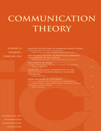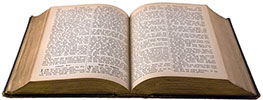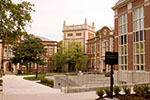 Journal Impact The importance of particular academic journals can be measured by the number of times and where their articles are cited.
Journal Impact The importance of particular academic journals can be measured by the number of times and where their articles are cited.
- An impact factor is a way of measuring the relative ranking of a journal within a particular field. Ranked lists of journals can be used to:
- Identify prestigious and influential journals in a particular discipline
- Identify highly ranked journals in which to publish
- Help determine the allocation of research funding
 Article Impact The value of journal articles, conference proceedings, and books, can be measured by the number times they are cited by other works and by alternative metrics, measuring the number and type of social media mentions.
Article Impact The value of journal articles, conference proceedings, and books, can be measured by the number times they are cited by other works and by alternative metrics, measuring the number and type of social media mentions.
- Citation analysis can be a useful measure of the scholarly impact of an article or other created work.
- A citation search is a look forward in time from the publication of one item to later works that reference that item.
- Researchers can use citation tracking tools to build references and follow the evolution of ideas, by starting with one seminal article and using it to find other relevant articles.
 Researcher Profiles Common researcher names, name changes, cultural differences in name order, and inconsistent use of middle initials, can make it difficult to accurately calculate measures of personal impact. Numeric codes can help identify individual researchers.
Researcher Profiles Common researcher names, name changes, cultural differences in name order, and inconsistent use of middle initials, can make it difficult to accurately calculate measures of personal impact. Numeric codes can help identify individual researchers.
- A scholarly identifier is a tool to help organize and link your full body of academic work. Researchers can easily establish a digital identifier in ORCID (Open Researcher & Contributor ID), Google Scholar, or Researcher ID (Thomson Reuters) to begin attributing their work to these accounts. This process creates a digital body of work to pool your citations, publications and research interests.
 Researcher Impact Researchers' success can be measured by the number of works they publish and the number of times their works are cited. Using citation databases and metrics to determine researcher impact:
Researcher Impact Researchers' success can be measured by the number of works they publish and the number of times their works are cited. Using citation databases and metrics to determine researcher impact:
- Demonstrate how often an author's work has been cited.
- Discover who is doing related work.
- Track the published work of colleagues and competitors.
- Explore the evolution of theories and ideas through citation tracking.
- Identify key authors in a field.
- Build a research profile so others can find and follow one's work.
 Institutional impact The prestige of a department or area of research within an institution can be measured by the collective impact of its individual researchers compared to those at other institutions.
Institutional impact The prestige of a department or area of research within an institution can be measured by the collective impact of its individual researchers compared to those at other institutions.
- Universities and colleges are ranked by several sources that use varying methodologies. Some of these rankings are controversial because of the weight given to data that may not truly represent academic quality.
- Researchers should examine each source's methodology carefully, and use multiple methods in determining academic value.
 Alternative Metrics (Altmetrics) are metrics for social media mentions and uses of scholarly output. This data can be useful for monitoring your personal impact with other scholars, practitioners, policy makers and the public.
Alternative Metrics (Altmetrics) are metrics for social media mentions and uses of scholarly output. This data can be useful for monitoring your personal impact with other scholars, practitioners, policy makers and the public.
 Journal Impact The importance of particular academic journals can be measured by the number of times and where their articles are cited.
Journal Impact The importance of particular academic journals can be measured by the number of times and where their articles are cited. Article Impact The value of journal articles, conference proceedings, and books, can be measured by the number times they are cited by other works and by alternative metrics, measuring the number and type of social media mentions.
Article Impact The value of journal articles, conference proceedings, and books, can be measured by the number times they are cited by other works and by alternative metrics, measuring the number and type of social media mentions. Researcher Profiles Common researcher names, name changes, cultural differences in name order, and inconsistent use of middle initials, can make it difficult to accurately calculate measures of personal impact. Numeric codes can help identify individual researchers.
Researcher Profiles Common researcher names, name changes, cultural differences in name order, and inconsistent use of middle initials, can make it difficult to accurately calculate measures of personal impact. Numeric codes can help identify individual researchers. Researcher Impact Researchers' success can be measured by the number of works they publish and the number of times their works are cited. Using citation databases and metrics to determine researcher impact:
Researcher Impact Researchers' success can be measured by the number of works they publish and the number of times their works are cited. Using citation databases and metrics to determine researcher impact: Institutional impact The prestige of a department or area of research within an institution can be measured by the collective impact of its individual researchers compared to those at other institutions.
Institutional impact The prestige of a department or area of research within an institution can be measured by the collective impact of its individual researchers compared to those at other institutions.  Alternative Metrics (Altmetrics) are metrics for social media mentions and uses of scholarly output. This data can be useful for monitoring your personal impact with other scholars, practitioners, policy makers and the public.
Alternative Metrics (Altmetrics) are metrics for social media mentions and uses of scholarly output. This data can be useful for monitoring your personal impact with other scholars, practitioners, policy makers and the public.